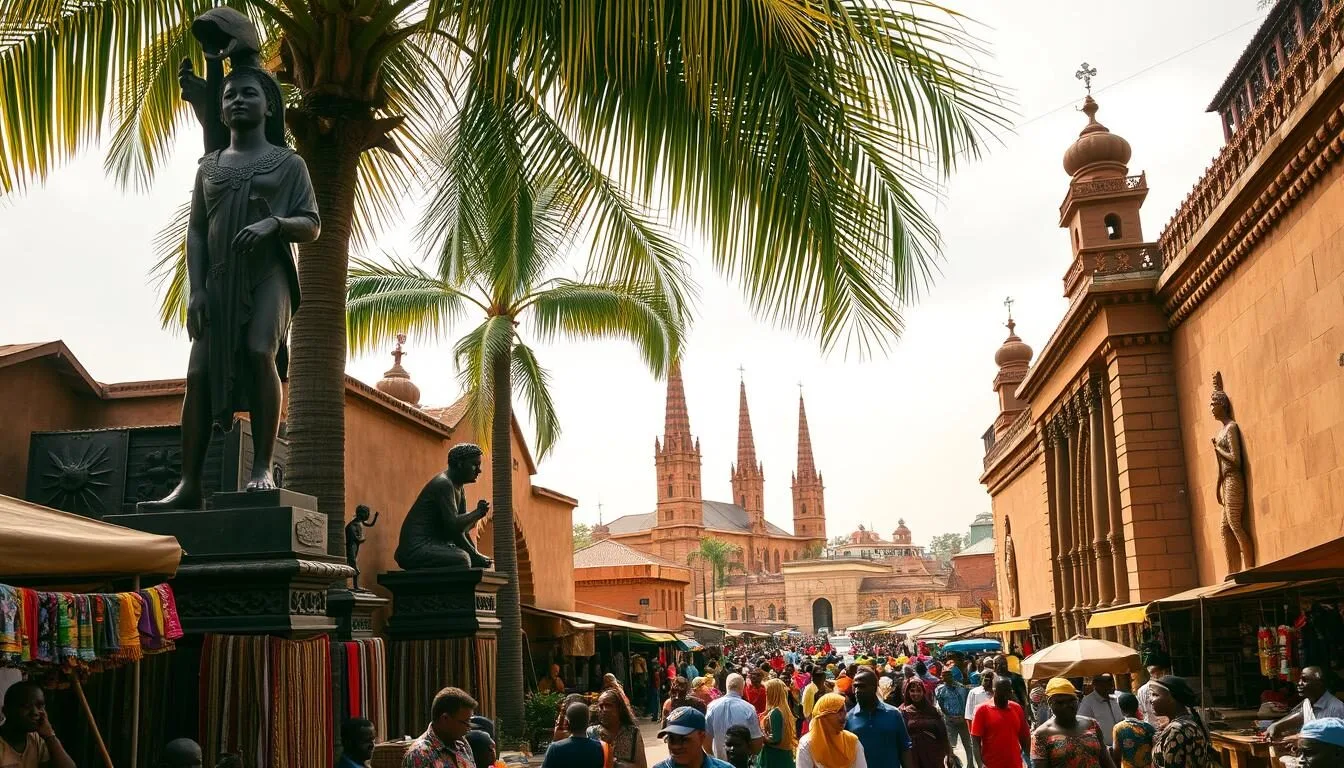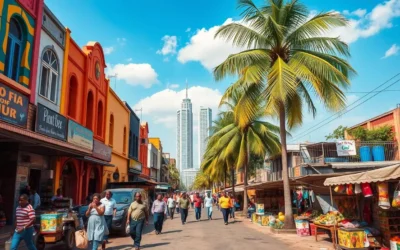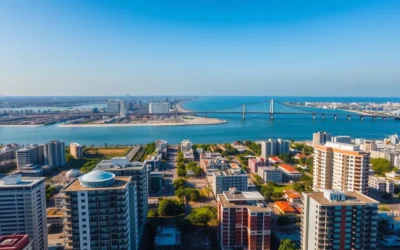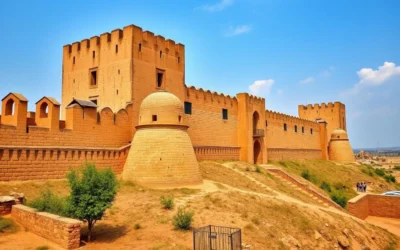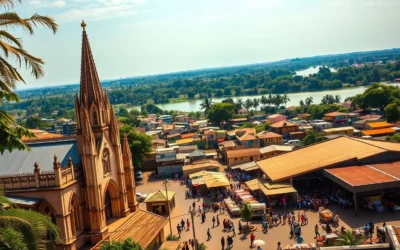✓ Accommodations ✓ Flights ✓ Rental Cars
Welcome to Benin City, a historical treasure trove in southern Nigeria that offers visitors a fascinating glimpse into one of Africa’s most significant ancient kingdoms.
You’ll discover a city rich in cultural heritage, from the famous bronze sculptures that adorn world-class museums to the traditional craftsmanship still practiced today.
This historic place is a must-visit destination for anyone interested in history, art, or culture, with a diverse range of experiences that cater to every type of traveler.
Discovering the Ancient Kingdom of Benin
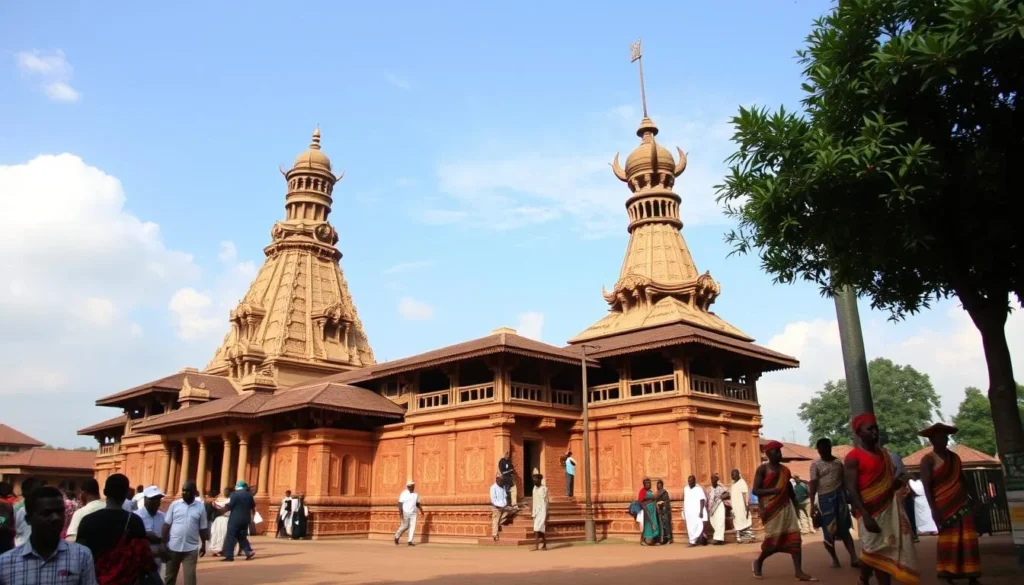
Step into the historical significance of the Benin Kingdom, one of West Africa’s most advanced states since the 11th century. You’ll be immersed in the rich history and culture of this West African civilization.
The Kingdom of Benin was renowned for its powerful kings (Obas) and exceptional artworks, particularly bronze sculptures. As you explore, you’ll gain insights into the complex political systems developed by the kingdom and its influence across the region.
- Immerse yourself in the rich history of the ancient Benin Kingdom, one of West Africa’s most sophisticated civilizations that flourished from the 11th century until the British invasion in 1897.
- You’ll gain fascinating insights into how this powerful kingdom developed complex political systems and became renowned for its exceptional artistic achievements.
- The kingdom’s legacy lives on in Benin City’s cultural institutions, where you can learn about the succession of Obas (kings) who ruled and expanded the empire’s influence across the region.
- Discover how the ancient kingdom established itself as a major trade center, developing relationships with European powers while maintaining its independence and cultural identity for centuries.
- Understanding the historical context of the ancient Benin Kingdom will enhance your appreciation of all the cultural sites you’ll visit throughout the city, reflecting the people‘s rich heritage.
The Royal Palace of Oba: A Cultural Treasure
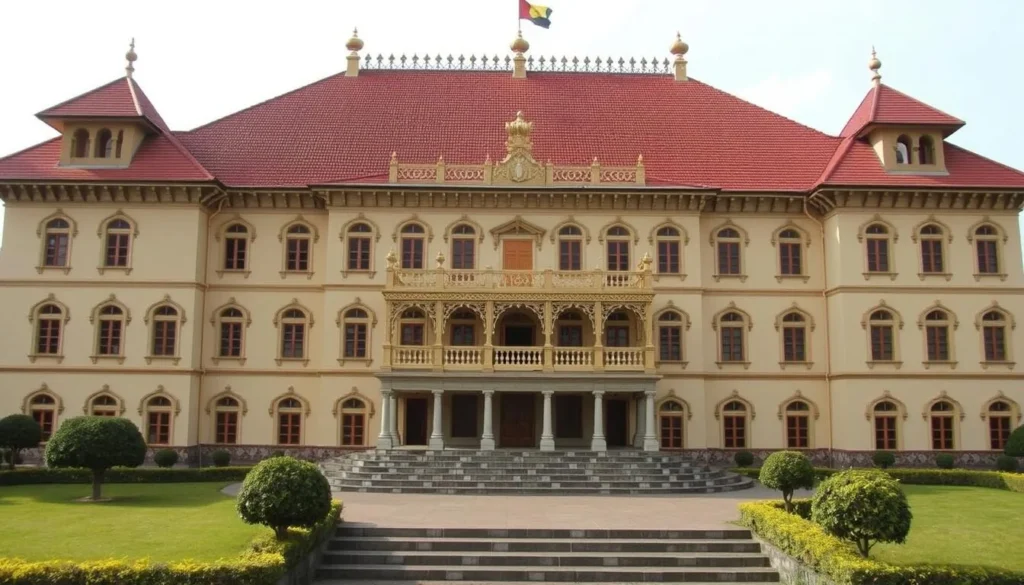
The Royal Palace of Oba in Benin City stands as a testament to the enduring legacy of the ancient Benin Kingdom. As a significant cultural landmark, it continues to play a vital role in the community.
You will have the opportunity to visit the Royal Palace of the Oba, the traditional ruler of Benin, which remains a powerful symbol of the kingdom’s heritage despite being rebuilt after the British invasion of 1897. The palace’s distinctive architecture reflects traditional Benin design principles, featuring impressive courtyards and ceremonial spaces.
- Explore the palace, which continues to function as the seat of the current Oba, maintaining centuries-old traditions and serving as the center of cultural and spiritual life in Benin City.
- Learn about the palace’s historical significance as the political and spiritual center of the ancient kingdom, where important decisions were made and elaborate ceremonies were held.
- While parts of the palace remain private, the sections open to visitors offer a glimpse into royal life and the continuing importance of traditional leadership in contemporary Benin society.
This historical site is a must-visit when in Benin City, offering insights into the region’s rich history and cultural practices. The palace is an integral part of the city’s identity, making it a significant place to experience the local culture.
As you visit the Royal Palace, you’ll be impressed by its grandeur and the role it plays in preserving the heritage of the Benin Kingdom. It’s a remarkable example of a palaces that have been preserved and continue to serve their original purpose.
National Museum of Benin: Exploring Rich Heritage
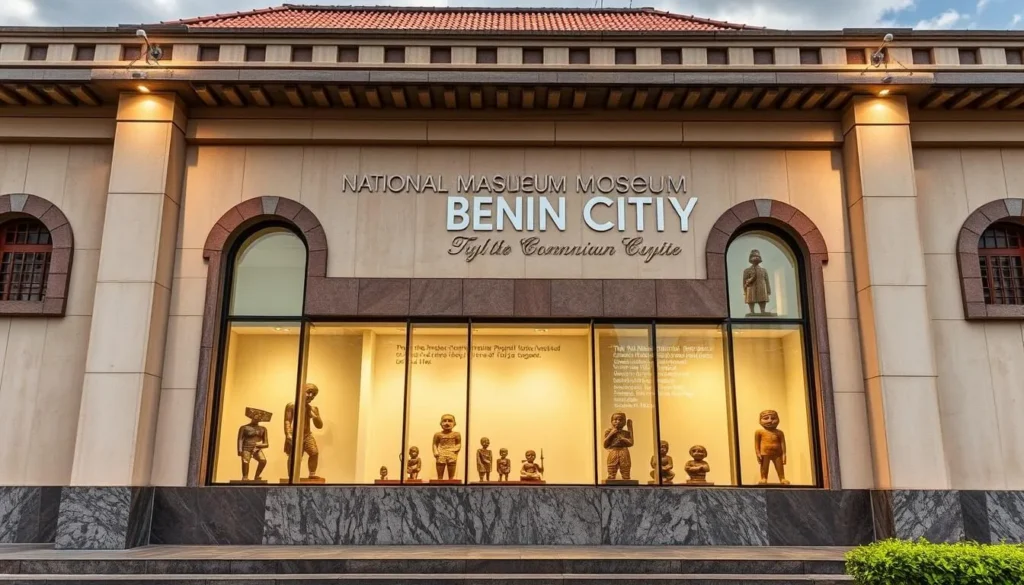
As you step into the National Museum of Benin, you’ll be surrounded by the rich heritage of the ancient Benin Kingdom. The museum houses an impressive collection of artifacts that showcase the artistic and cultural achievements of the kingdom, including bronze plaques and ivory carvings.
The museum offers a unique glimpse into the history and culture of Benin, with detailed information about the significance of these artifacts in royal ceremonies and historical documentation. You’ll be able to view replicas of the famous Benin Bronzes, intricate metal plaques and sculptures that demonstrate the exceptional craftsmanship for which the kingdom was renowned worldwide.
The exhibits also cover the controversial history of the original Benin Bronzes, many of which were looted during the British Punitive Expedition of 1897 and are now housed in museums across Europe and America. This place is a must-visit to understand the depth of Benin’s cultural heritage.
Igun Street: Home of the Famous Bronze Casters
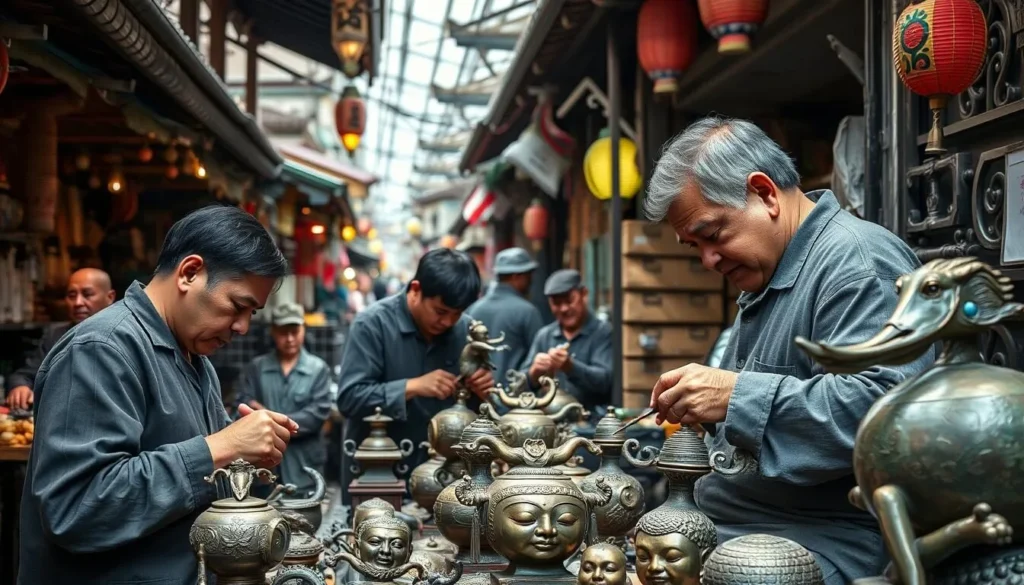
Step into Igun Street, and you’ll discover the heart of Benin’s bronze casting culture. This historic street, recognized as a UNESCO World Heritage Site, is home to skilled artisans who continue to create exquisite bronze sculptures using traditional methods passed down through generations.
As you walk down Igun Street, you’ll have the opportunity to visit workshops where these artisans work their magic. You’ll witness the fascinating process of lost-wax casting, the same technique used to create the renowned Benin Bronzes that have gained worldwide recognition for their artistic excellence.
The bronze casters of Igun Street belong to a guild with strict membership rules, typically passing their skills from father to son within specific families authorized by the Oba. This living cultural heritage site offers you not just beautiful souvenirs to purchase, but a genuine connection to the artistic traditions that have defined Benin’s cultural identity for centuries, making it a significant cultural place.
Benin City Moats: Ancient Engineering Marvel
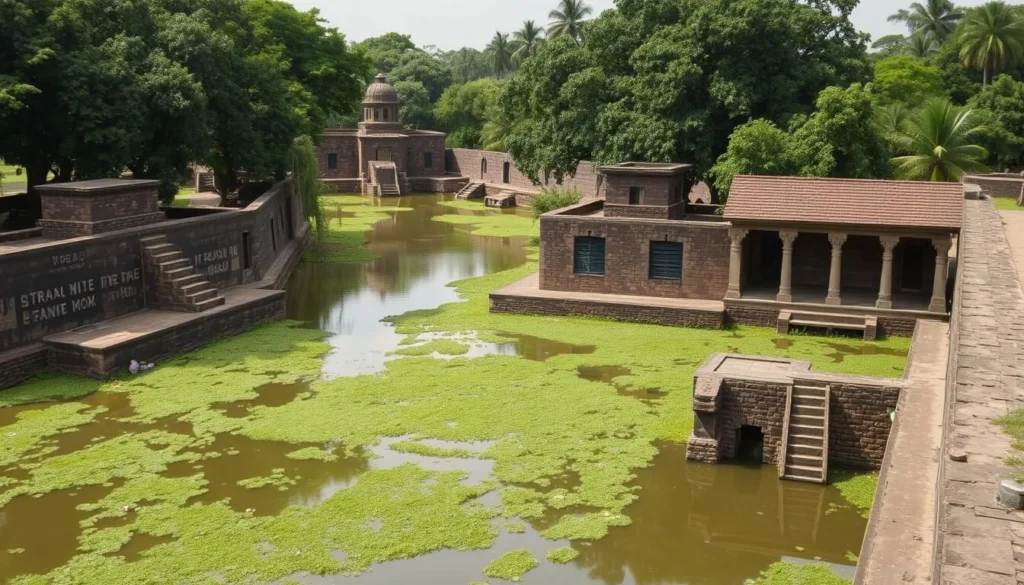
As you explore Benin City, you’ll discover the impressive Benin Moats, a historical site like no other. The Benin Moats, also known as “Iya,” are a series of defensive walls and moats that surrounded the ancient city of Benin.
Marvel at the remnants of these massive earthworks, constructed between the 13th and 15th centuries, which once made up the world’s largest man-made structure before the industrial age. The moats were an impressive feat of engineering, extending over 16,000 kilometers in total length, dug without modern equipment, and designed as a sophisticated defensive system.
While much of this ancient wonder has been affected by urban development over time, you can still visit sections that remain visible, offering a tangible connection to the city’s defensive past. The Benin Moats were recognized by UNESCO as a tentative World Heritage Site, acknowledging their historical significance and the need for their preservation as an important part of the city’s history.
Oba Market: Experience Local Commerce and Culture
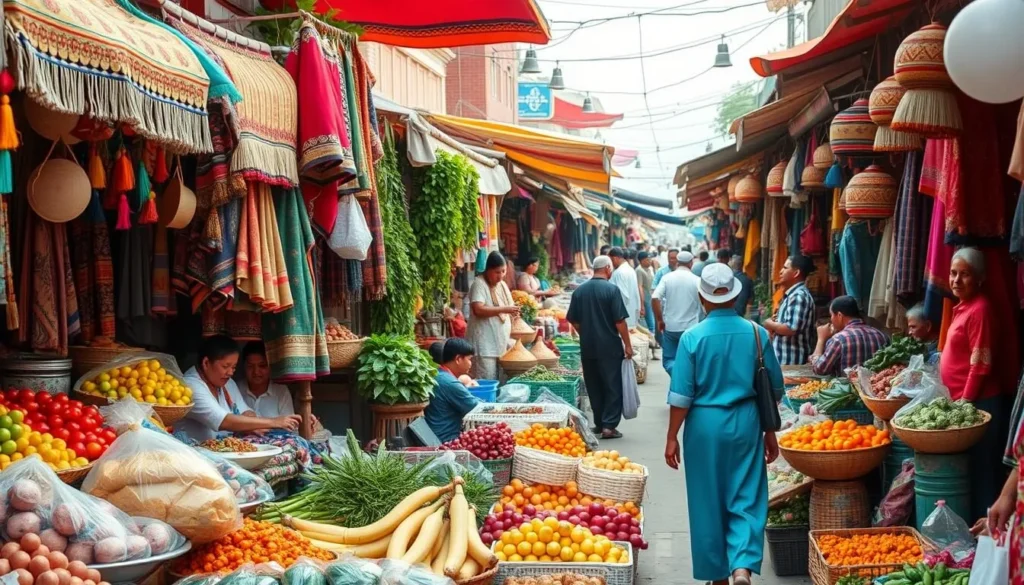
As you step into Oba Market, you’re immediately immersed in the vibrant culture of Benin City. This is one of the largest and most important markets in the city, offering a wide variety of goods that give insight into local commerce and daily life.
You’ll experience a sensory overload as you navigate through the bustling stalls filled with colorful textiles, fresh produce, spices, traditional medicines, and handcrafted items. The people of Benin City gather here not just to shop, but to socialize and maintain community connections, making it a significant social hub.
The market offers a genuine glimpse into everyday life in Benin City, where traditional commerce practices continue alongside modern business transactions. Listen to the lively haggling between vendors and customers, a cultural practice that’s both an art form and an expected part of the shopping experience at this vibrant place.
Benin City, Nigeria: Best Things to Do – Top Picks for Food Lovers
Benin City is a culinary gem, offering a rich gastronomic experience that reflects the city’s cultural heritage. The city’s cuisine is a testament to the diverse and flavorful traditions of the Edo people.
Traditional Edo Cuisine: Must-Try Dishes
When in Benin City, you must try the local specialties. Signature dishes include Edo-style egusi soup, made with ground melon seeds and enhanced with traditional spices and palm oil. You should also sample banga soup, prepared from palm fruit extract and seasoned with native spices, typically served with starchy sides like pounded yam or eba (cassava meal). Another delicacy not to miss is black soup (eware), made with various leafy vegetables and enhanced with local spices, considered both nutritious and culturally significant.
Best Local Restaurants and Eateries
For an authentic dining experience, visit popular local eateries like Eghosa Restaurant and Evbuomwan Restaurant, where you can enjoy traditional Edo cuisine prepared according to local recipes. For a more upscale dining experience, consider Protea Hotel Select Emotan or Prestige Hotel and Suites, which offer both local specialties and international dishes.
Okomu National Park: Wildlife and Nature Escape

Located just 60 km northwest of Benin City, Okomu National Park is a must-visit destination for nature lovers and wildlife enthusiasts. As one of Nigeria’s smallest yet most biodiverse national parks, it offers a unique escape into a protected rainforest ecosystem.
You can explore the park’s lush trails on a guided tour, spotting rare animals such as the elusive elephants, buffaloes, and numerous primate species. The park is also a haven for bird watchers, with over 150 species inhabiting the area, including the rare hornbill and the colorful turaco.
For a more immersive experience, consider staying overnight at the Okomu Oil Palm Company guest house or the park’s basic accommodations, allowing you to enjoy early morning wildlife viewing when animals are most active.
Emotan Statue: Honoring a Legendary Figure
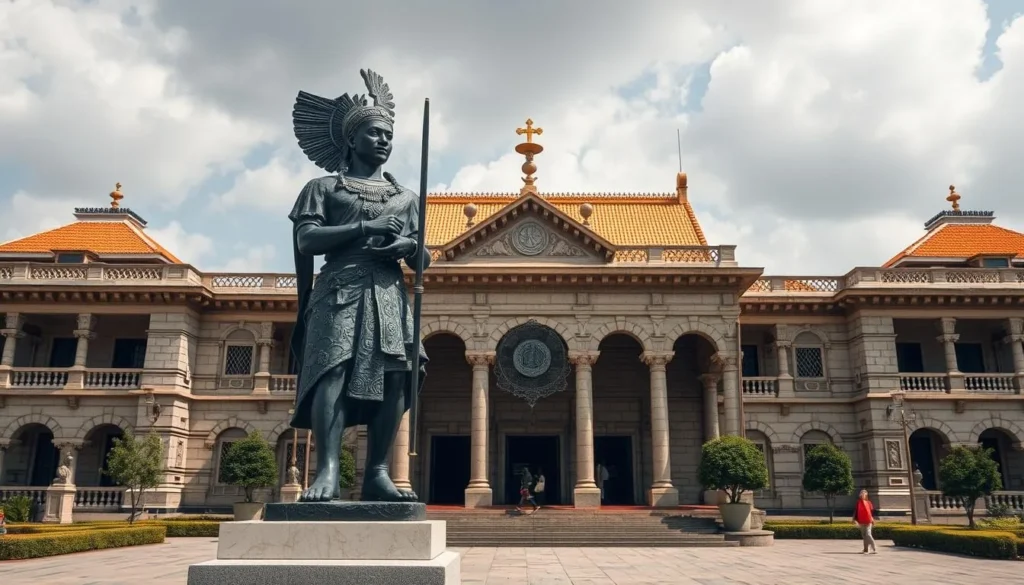
The Emotan statue stands as a significant landmark in Benin City, honoring a legendary figure from the 15th century. Emotan was a market woman celebrated for her loyalty to the royal family and her role in Benin’s history.
You’ll learn that Emotan earned her place in Benin’s history by helping Prince Ogun, who later became Oba Ewuare the Great, during his exile. This act demonstrated the important role of women in the kingdom’s life and people‘s daily activities.
The statue, located near the Oba’s palace, has become a symbol of loyalty, kindness, and the everyday heroes who shaped Benin’s cultural narrative in this significant place within the city.
Holy Aruosa Cathedral: Unique Religious Heritage
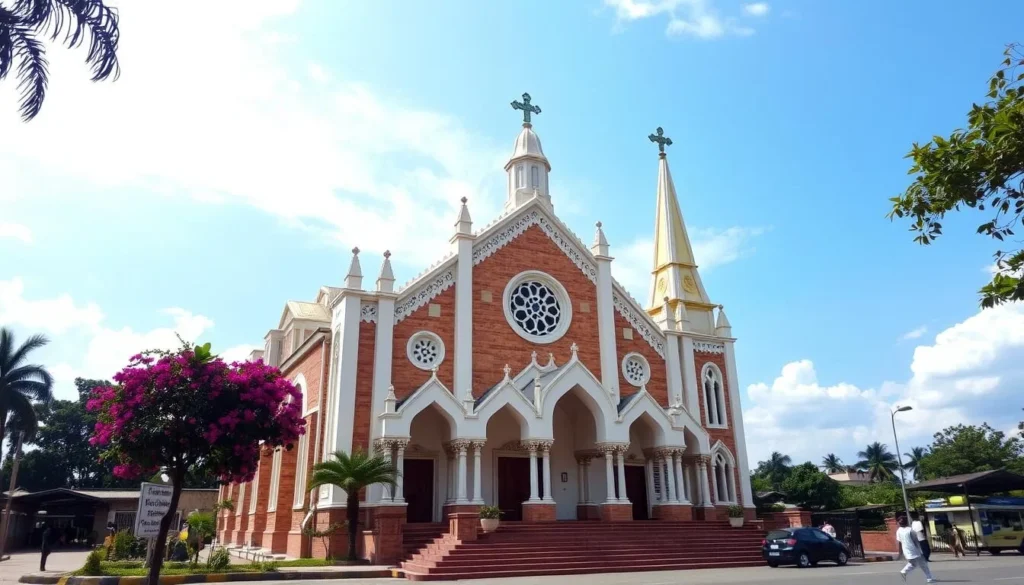
As you explore Benin City, you’ll discover the Holy Aruosa Cathedral, a unique blend of traditional Benin spirituality and Christian influences. This fascinating institution represents a remarkable fusion of local culture and Christianity, making it a significant cultural site in the region.
The cathedral’s services incorporate elements of traditional Edo worship, including prayers in the Edo language and rituals that honor ancestors, creating a religious experience found nowhere else in the world. The Holy Aruosa Cathedral was established during the colonial period and remains under the authority of the Oba of Benin, showcasing the resilience of Benin’s cultural identity and the complex ways in which traditional and introduced religious practices have interacted throughout the region’s history.
Visiting this place of worship offers a glimpse into the rich religious heritage of the Benin people, making it an essential stop for anyone interested in understanding the local culture and people.
Benin City Nightlife: Entertainment and Music Scene
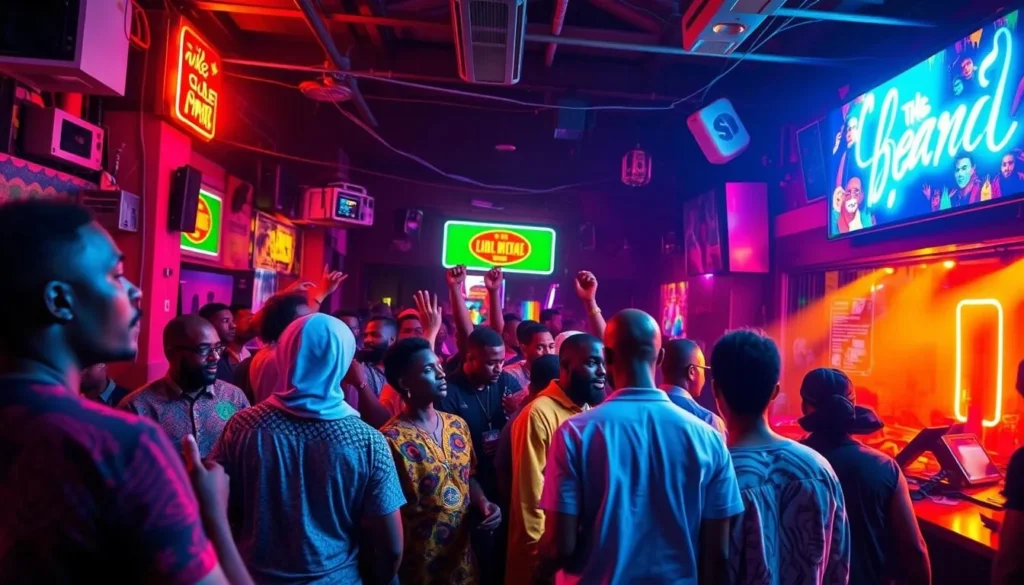
Benin City’s nightlife is a fusion of traditional and contemporary entertainment, offering a unique experience for visitors. As you explore the city at night, you’ll discover a diverse range of venues, from upscale lounges and clubs like Hexagon and Signature to more casual spots where you can enjoy live music.
The city’s nightlife is characterized by the popular Afrobeat and highlife genres, which are sure to get you moving. You can also witness traditional performances featuring Edo music and dance forms that have influenced Nigeria’s broader cultural landscape.
Many hotels and restaurants transform into entertainment venues in the evening, offering cultural shows that combine traditional dance, music, and sometimes theatrical performances depicting historical events. For a more relaxed evening, you can visit one of the city’s palm wine bars, where you’ll join locals in enjoying this traditional beverage while listening to stories and informal music sessions.
Day Trips from Benin City: Exploring Edo State
Embark on a journey beyond Benin City to uncover the natural beauty and cultural richness of Edo State. The region offers a plethora of exciting day trips that showcase its diverse heritage.
Ososo Tourist Centre
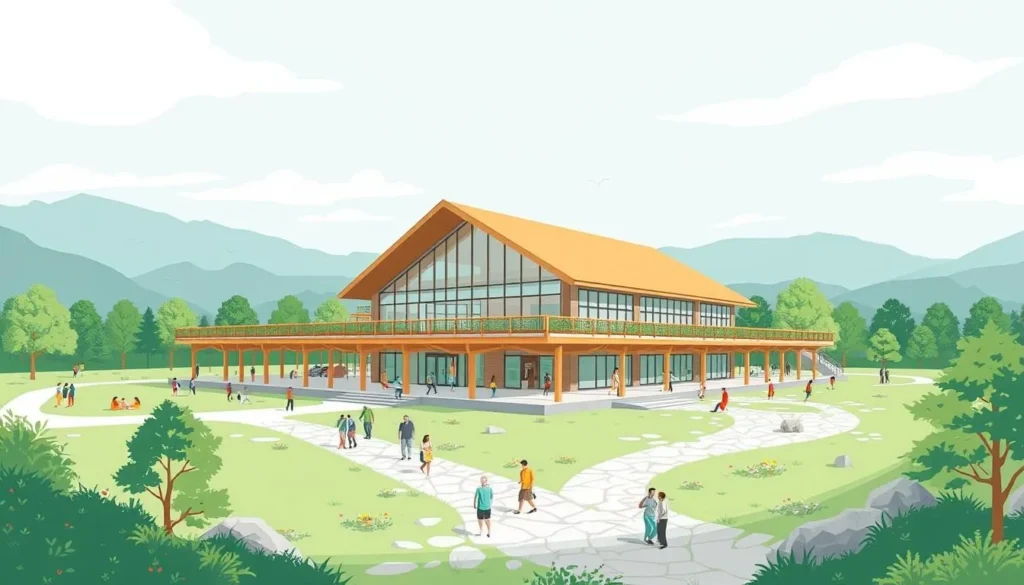
Visit the Ososo Tourist Centre, located in the highlands of Edo State, where you’ll enjoy breathtaking panoramic views and learn about the unique cultural traditions of the Ososo people. The center features exhibitions of traditional crafts and historical artifacts.
Somorika Hills

Explore the magnificent Somorika Hills, a stunning natural formation that offers excellent hiking opportunities and spectacular views. The hills hold cultural significance for local communities and feature in many traditional stories and legends.
These day trips provide a refreshing contrast to the urban experience of Benin City, demonstrating the ecological and cultural diversity that makes Edo State a fascinating destination for tourism.
Shopping for Souvenirs: Art and Crafts in Benin City
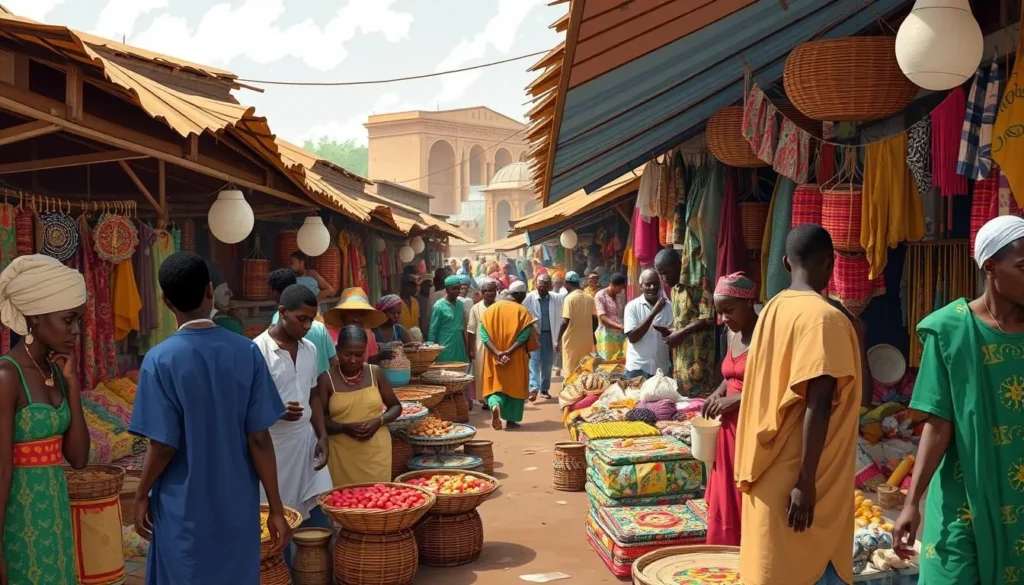
The art and crafts scene in Benin City is a reflection of its rich history and cultural identity, making it a great place to find souvenirs. You can explore various markets and centers to discover unique pieces that showcase the region’s artistic traditions.
Authentic Art Pieces: You’ll find the most authentic art pieces on Igun Street, where you can purchase bronze sculptures directly from the artisans who create them using centuries-old techniques.
Other unique souvenirs include intricately carved wooden items, such as masks and statues, and locally made fabrics featuring traditional Edo patterns and designs. The Benin Arts and Crafts Village is another great place to visit, where you can compare styles and find unique pieces while supporting local craftspeople.
Conclusion: Making the Most of Your Visit to Benin City
Benin City is more than just a destination; it’s an immersive experience into the heart of Nigeria’s rich heritage. As you explore this historical treasure trove, you’ll discover a unique blend of culture, history, and natural beauty.
To get the most out of your trip, balance visits to historical sites like the Royal Palace and National Museum with cultural experiences such as Igun Street’s bronze workshops and the vibrant Oba Market. Consider timing your visit to coincide with one of Benin City’s traditional festivals, when the city comes alive with music, dance, and ceremonial displays.
Whether you’re fascinated by history, art, culture, or natural beauty, Benin City offers a wealth of experiences that will leave you with a deeper appreciation of Nigeria’s cultural complexity. Take your time to engage with local guides who can share the deeper stories behind what you’re seeing, making your visit truly unforgettable and enriching your understanding of the best things to do in this incredible city.
The above is subject to change.
Check back often to TRAVEL.COM for the latest travel tips and deals.
